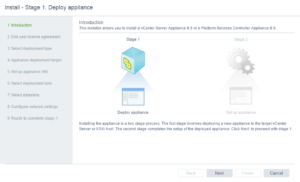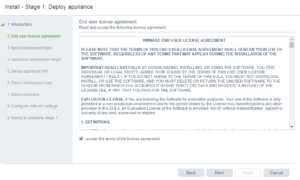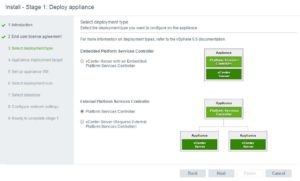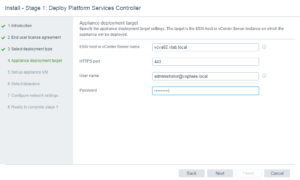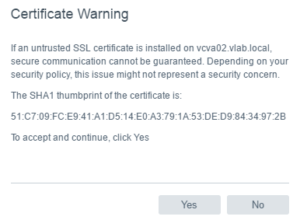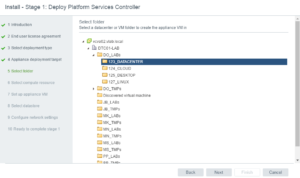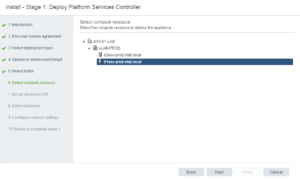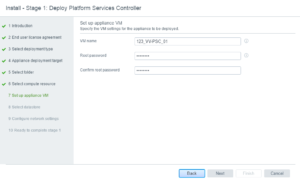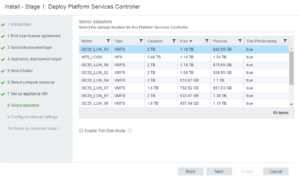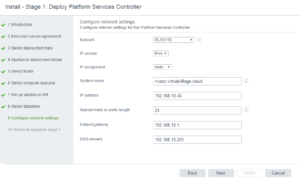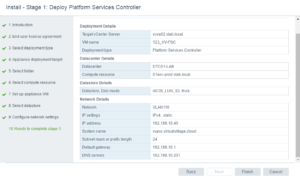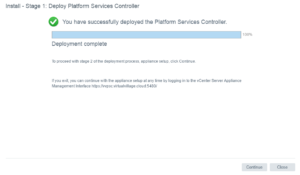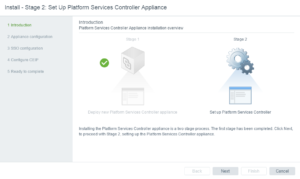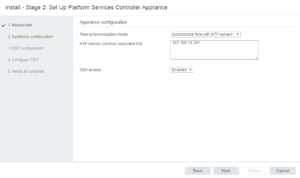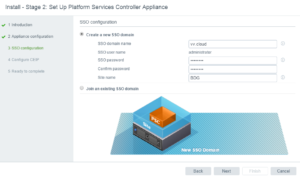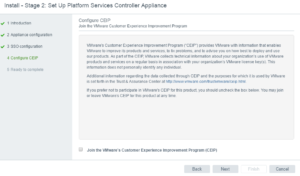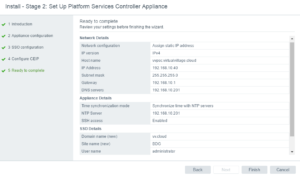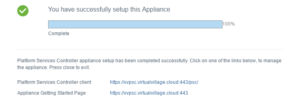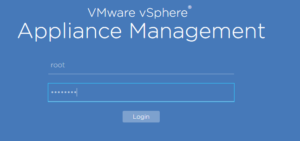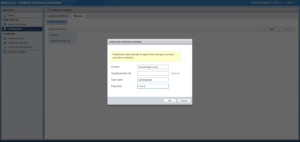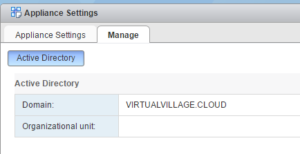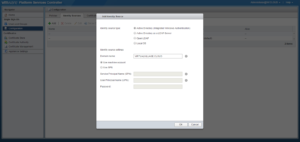vSphere 6.5 Installation – Part 1 – External PSC
This is the first part of the series describing the different options to install, restore and upgrade vSphere 6.5, especially the vCenter server.
In this part we will describe the process of External PSC deployment.
1.The first step is to download the vCSA ISO image and mount it for instance to your desktop. Inside the ISO image go to D:\vcsa-ui-installer\win32 and run the installer.exe.
2. Then we choose the Install option, as you can see there are also available such option as Upgrade, Migrate and Rocever. All of them will be described further in next part of the series.
3. In vSphere 6.5 the process of deployment is divided into two phases, or more correctly stages. The first stage contains the deployment of the appliance where it is deployed in our infrastructure. The second stage will let you configure the PSC and creating SSO domain, etc. It’s nothing to do on this step, simply click Next.
4. Accept the End User License Agreement and click Next.
5. Choose the deployment type. In my case I’m going to use external PSC and this is my first node, mark Platform Service Controller and click Next.
6. In this step you have to provide the information about the host or vCenter where the appliance will be deployed. I’d like to emphasiss the option with vCenter which is new and in my opinion very helpful. It’s also the recommended option, of course if you already have a vCenter in place. That’s because if you connect directly to an ESXi host and it is in a DRS cluster, DRS initiated vMotions may occur during deployment process. To prevent this, you can either connect to vCenter managing the ESXi host or ensure the cluster where this ESXi host resides is not set to Fully Automated DRS for the duration of the deployment. You also need to provide the credentials to vCenter or ESXi host for an user that have the privileges do deploy and configure virtual appliances.
7. Verify and confirm the Certificate warning.
8. In case you have choosen the vCenter to connect tom, you can indicate a specific folder for the appliance. Click Next.,
9. Choose the correct ESXi host to deploy it and click Next.
10. Specify the Virtual Machine name, root password and click Next.
11. Choose the datastore you want to use. There is also an option to configure the appliance this in thin provisioning mode. If you prefer so, simply mark the checkbox “Enable Thin Disk Mode” and click Next.
12. This steps requires the network configuration. You are supposed to provide port group from the available list of port groups configured on ESXi host/vCenter you choosed before. There is also a place for system name which is optional (in case you don’t provide it, IP address will be used instead)
13. Last step in stage one – confirmation. If all settings are correct click Finish to start the deployment process.
14. During the dpeloyment process you can observe the progress via installer, or vSphere Client/Web Client.
15. After the deployment is done you have to option to continue and move to stage two via the installer window. If you do not want to perform this stage at he moment, you can close the installer and do it later from the vCenter Server Appliance Management Interface ( it’s available at https://your_PSC_FQND_or_IP:5480) We will go through this proces at once.
16. The welcome screan informs you that this is the stage 2. Click Next.
17. Provide the IP address of NTP Server, mark the enable SSH checkbox and click Next.
18. Here you have two option – create a new SSO domain or join the esixting one. This is my first PSC in the environment so I will create new SSO domain. Be aware that it is not an Active Directory! It’s a separate domain for VMware and I suggest to choose a different name than you AD domain. The domain name must conform the RFC 1035 standards. Site name could be helpful in case you have two datacenters and in both of them you are going to deploy the PSC infrastructure. It will let you distinguish these sites. The siete name could be connected with datacenter name or the city in which it’s located. It’s up to you, just remember that the name should include alphanumeric characters or the symbol dash (-). They should not exceed 63 characters and include high-ASCII/non-ASCII characters. After all, click Next.
19. Choose the option to join or not to join the VMware’s Experience Improvement Program (CEIP) and click Next.
20. Review all the configured options and values and click Finish.
21. You will need to confirm the warning that you are completely sure about your choice.
22. Again as in the stage 1 you can monitor the progress untill it’s finished.
23. After the deployment is done, you can access the PSC Client at https://psc_FQDN_or_IP:443/psc
Now you can make the initial configuration of you SSO domain. I would start from adding the appliance do AD domain. To do it you have to log to the 5480 port ( VAMI interface) using root account with password you specified during instalation.
When you are logged in go to Configuration -> Manage -> Active Directory Join and provide the required information. After that you have to manually reboot the PSC node.
After the PSC node is back you can verify that the domain is listed in Manage tab.
Then you can log into PSC client (https://psc_FQDN_or_IP:443/psc) using administrator account and password in domain you created during installation ( in my case it’s vv.cloud so so the user will be administrator@vv.cloud). Next you can add the new identity source using Windows Integrated Authentication. To perform this action move to Configuration -> Identity Sources -> Add.
You can also indicate this identity source as Default Domain using globe icon.
It’s done, your PSC is up and ready. You can continue the configuration or deploy the vCenter Server and connect it to this SSO domain.
I’ll show the process in next part of the series.
- vSphere 6.5 Installation – Part 2 – vCenter Server Appliance
- vSphere 6.5 Installation – Part 3 – vCenter Server on Windows


